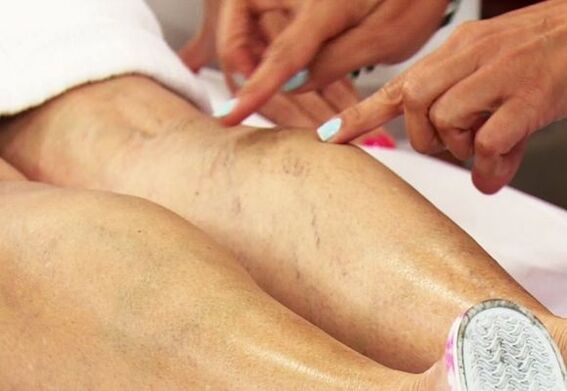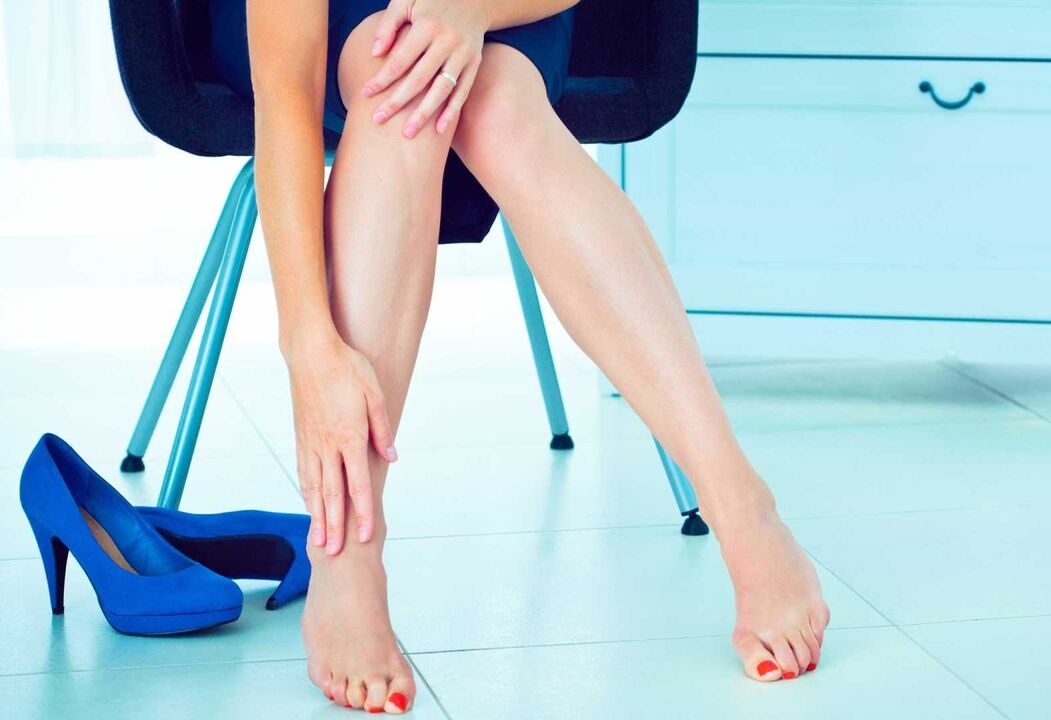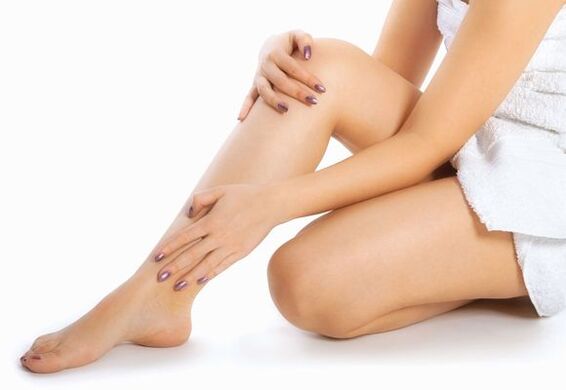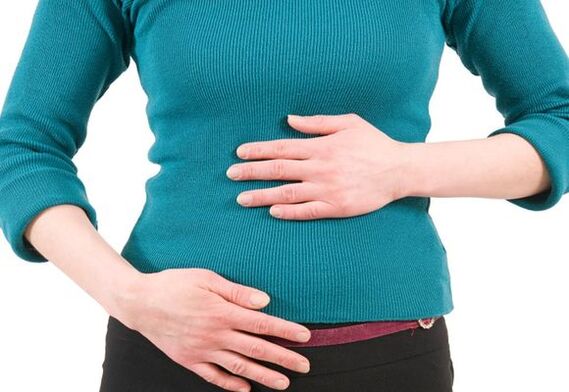Varicose veins are a very insidious disease. It can hardly manifest itself for years, because at first nothing bothers a person, and mild ailments are attributed to living conditions, but not to problems with the veins. And then the deterioration sets in, the disease progresses, and it becomes much more difficult to cure it. In this case, varicose veins can affect a variety of body parts that have veins. But the vast majority suffer from female legs, so the symptoms of varicose veins in women should be given special attention.
Varicose veins are a very insidious disease. It can hardly manifest itself for years, because at first nothing bothers a person, and mild ailments are attributed to living conditions, but not to problems with the veins. And then the deterioration sets in, the disease progresses, and it becomes much more difficult to cure it. In this case, varicose veins can affect a variety of body parts that have veins. But the vast majority suffer from female legs, so the symptoms of varicose veins in women should be given special attention.

The mechanism of the disease
The main cause of varicose veins in the legs is the weakening of the walls of veins and blood vessels, as a result of which they can no longer push blood with optimal force.
The blood stagnates and further stretches the veins. As they expand, they lose their elasticity, become brittle and eventually stop providing normal blood flow. Due to the fact that blood constantly stands in the veins, they swell, knots and blood clots form, obstructing the lumen in the vessels. This leads to thrombophlebitis.
Skin cells that do not receive enough oxygen begin to die, tissue necrosis develops, trophic damage and ulcers appear. This is called end-stage varicose veins of the lower extremities and is only treated with the help of surgery.
It is no longer possible to completely cure this stage of the disease, but it is likely to slow down its evolution and achieve a more or less stable remission.
Important! Doctors believe that the main cause of the appearance of varicose veins of the lower extremities is a hereditary predisposition. Therefore, if cases of the disease have been found in older generations of the family, special attention should be paid to the health of the vessels.

How not to miss the appearance of the disease?
It is very important to carefully monitor all ailments, even minor ones. If you catch stage 1 of development, when symptoms of varicose veins in the legs are just beginning to appear, in most cases it is possible to reverse the process and maintain healthy veins. Thus, the first signs of varicose veins of the legs are:
- increasing swelling, which began to bother not only in the evening, but also at other times of the day;
- feeling of heaviness and "tired legs" syndrome, already appearing in the middle of the day or even earlier;
- general weakness and state of apathy resulting from insufficient supply of tissues with oxygen;
- spider veins or stitches on the legs and thighs, which are often the first sign of varicose veins that people pay attention to.
In this case, with a timely visit to the doctor, the simplest methods of treatment can help: folk remedies, drugs for the prevention of varicose veins in the legs - venotonics in tablets and capsules, ointments, creams and gels.
If it is necessary to treat varicose veins on the legs, the phlebologist can prescribe drugs that thin the blood and prevent the formation of blood clots, as well as wearing special compression underwear or using an elastic bandage.
Important! Despite the fact that many drugs have few side effects and are prescribed, including for the prevention of the disease, the decision on which of them should be made should be made exclusively by the phlebologist, but not by the patienthimself.

What is the danger of the disease?
First of all, varicose veins, reaching an advanced stage, threaten the formation of blood clots, which can block the flow of blood and oxygen to the most important arteries and veins located next to the lungs and heart. Pulmonary embolism very often leads to a sad outcome.
Also, varicose veins in the legs can be hidden, affecting the vessels running deep into the legs. Such a condition is dangerous in that outward signs begin to appear when the disease has already passed to the 2nd or even the 3rd stage, at which one cannot do without surgery. A visit to the doctor should not be postponed if:
- the legs began to swell often, while the kidneys are completely healthy, diabetes is not diagnosed, fluid intake is normal;
- pulling or sharp pains appear in the pelvic organs, groin and upper thighs;
- periodic leg cramps, especially at night;
- the areas of the lower limbs along the veins began to swell after any load.
Internal varicose veins in the legs can seriously complicate a person's life, bringing him constant pain and bringing the situation to the intervention of a surgeon.
Important! Varicose veins during pregnancy are common. Most women are sure that this is temporary and will definitely pass after childbirth, but in reality this does not always happen.
Much more often, after the load on the veins during childbirth, the disease begins to progress. Therefore, signs of varicose veins during pregnancy should not be ignored in any way.
Can other parts of the body be affected?
Symptoms of varicose veins can affect a variety of organs. In particular, varicose veins in the arms occur much less frequently than varicose veins in the lower extremities, but they cause just as much anxiety and grief. If you notice symptoms on your hands similar to the manifestation of this disease, you should seek medical attention as soon as possible:
- the veins become very visible, darken and swell;
- on the hands, including the fingers, swelling occurs;
- often there is a burning sensation and pain;
- doing the same actions for a long time becomes problematic due to heaviness in the hands;
Varicose veins on the hands appear, both in women and in men, with approximately the same frequency, but nevertheless, this disease affects the stronger sex less often by 1. 5-2 times.
This is due to the fact that representatives of the beautiful half of humanity are more sensitive to fluctuations in the hormonal system, which is one of the main factors provoking varicose veins in the arms.
Important! The first signs of varicose veins of the upper and lower extremities are very similar, but varicose veins of the legs have symptoms that are considered a consequence of flat feet, long walking or wearing shoes with heels, osteochondrosis andVaricose veins of the hands characterize symptoms that many take for a physical characteristic of the structure of the veins.
Intestinal injury
Almost with the same frequency as varicose veins of the legs, there are varicose veins of the rectum and its prolapse.
Under this name, the well-known hemorrhoids are hidden. Those who are not lucky enough to contract this disease can tell you how unpleasant the signs of varicose veins manifest themselves in such a delicate area:
- sudden attacks of sharp pain when walking;
- severe pain when sitting up to the inability to sit;
- the appearance of blood from cracks in the anal passage and its pronounced swelling, itching and burning;
- the act of defecation is also accompanied by pain, especially if it is associated with constipation, which often occurs with varicose veins in this area.
Symptoms of internal varicose veins are not as difficult to notice as external ones, as there are normally no uncomfortable sensations in the anus.
However, when referring to a proctologist, he usually puts 2nd degree varicose veins. It is not as easy to cure it as the first stage of the disease, but it is quite possible without the use of radical measures.

If varicose veins on the arms and legs are more common in women, then varicose veins in the rectum affect the male body more. The main reasons for this are heavy physical exertion, serious sports, alcohol consumption and a large amount of junk food, as well as prostate diseases that contribute to the narrowing of the urethra.
Important! Having found the first symptoms of varicose veins of the rectum, you need to start treating it as soon as possible, since the danger of disease in this particular area lies in the fact that the intestines can suffer, and the work of the gastrointestinal tract can bedisturbed. .
The disease develops gradually, without sharp jumps, but can lead to intestinal neoplasms, both benign and oncogenic.
male problem
If varicose veins on the legs in men are quite rare, varicocele is a purely male disease. It consists in the fact that the expansion of the veins of the spermatic cord and testicles becomes one of the causes of infertility due to the male factor.
The venous canal with varicocele is filled with blood, which the vessels cannot move further into the kidney or the small vena cava. In most cases, this disorder occurs on the left testicle, since two veins connect in this area: the renal and the seminal.
Symptoms of testicular varicose veins do not manifest themselves in any way until the couple has a problem conceiving. Then both partners go to the doctors, the woman - to the gynecologist, the man - to the andrologist. And first of all, an experienced doctor will examine the varicocele.
This disease can be detected both with the help of ultrasound and dopplerography, and by probing the veins during the patient's press tension. If the diagnosis is confirmed, the man is ordered to do a spermogram to determine how far the disease has gone by the state of the sperm.
Important! It is possible to cure varicocele only with surgery, and it is usually performed to eliminate infertility in men.
In itself, this phenomenon is not dangerous and usually does not cause discomfort, but sometimes the veins expand so much that they cause discomfort or pain. In this case, the operation is also indicated.
Conclusion
Varicose veins are caused by many factors, most of which can be corrected. And since this disease belongs to the category of dangerous diseases and often causes serious complications, as a result of which a person can become disabled, it will be much easier to take timely preventive measures to avoid the development of the disease:
- normalize nutrition by eliminating the abundance of fatty, spicy, salty and fried foods;
- stop smoking and alcohol;
- after consulting a doctor, take venotonic drugs, use ointments that strengthen the walls of blood vessels;
- do not spend a lot of time in the same position, prolonged sitting is just as dangerous as standing;
- allocate enough time for sports;
- control weight, prevent the appearance of extra pounds, this is especially true for women during the period of bearing and breastfeeding;
- choose comfortable shoes with low, wide heels that do not squeeze your legs, and leave high heels for exceptional cases;
- take a contrast shower every day, paying particular attention to the legs, arms and pelvic organs;
- stay as little as possible in hot rooms, hot saunas and baths;
- with a hereditary factor, it will be useful to wear compression stockings, tights or golfs.
Having found the first signs of varicose veins, it is imperative to contact a phlebologist and together with him set up a treatment plan.


















